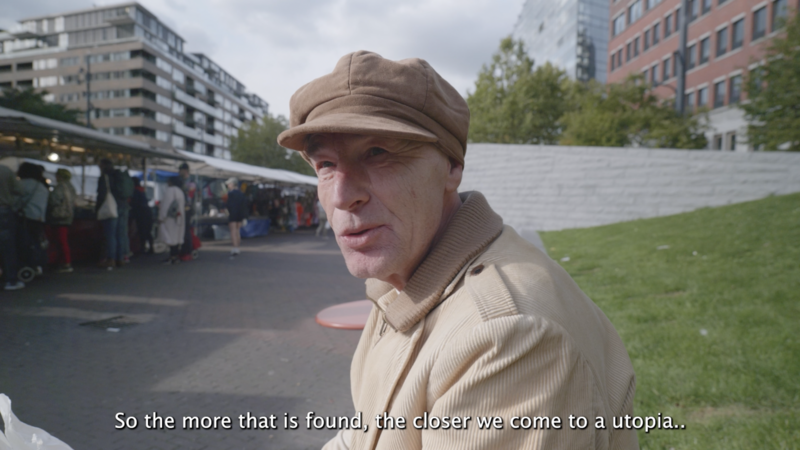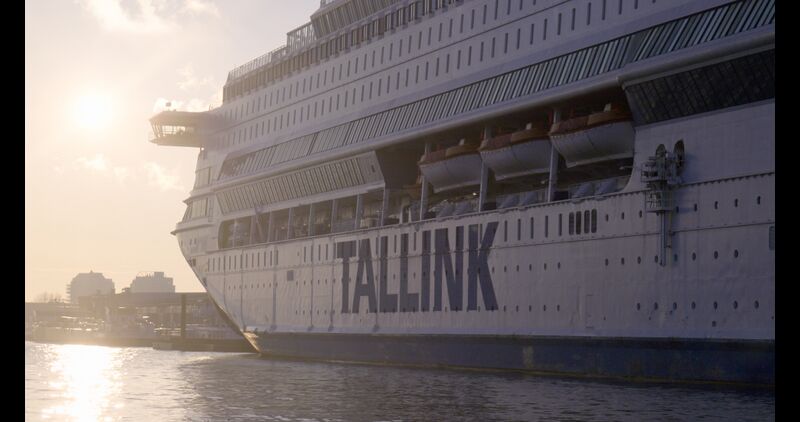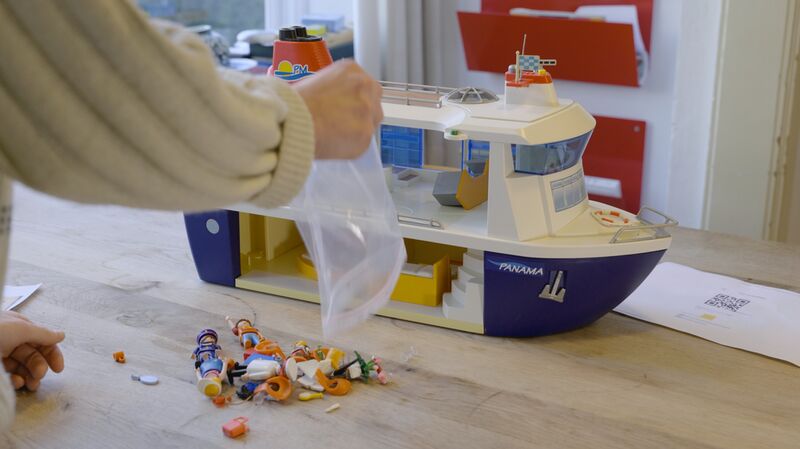Toto's first draft ToP
Over the past two semesters at Lens Based Media, Piet Zwart Institute, I have been making several video works. Most of the produced video work’s could be identified as non-fiction, socially engaged, reflective, non-linear. An exemplary work, for my self-directed this practice, was my short film: ‘The Tallinn Cruise’, a work produced for the Eye Research Lab. I would describe it as a playful and reflective investigation on clashing narratives between uses and connotations of cruise ships in Rotterdam. I see the film as an attempt to untangle different realities using the Cruise ship as a vessel.
Before I embarked on the cruise ship journey, I started my research on the concept of Utopia. Throughout my practice, what could be categorized in the documentary, experimental non-fiction realm, I mostly start my artistic projects off with an actual image, main character or space or place, this time, at the beginning of the first semester I started with an idea, or a concept, I wanted to explore on the notion of a Utopia.
My initial motivation to work with this concept started, I think, with an urge to look for something optimistic in a time of crisis. Besides this, there is also a fantastical, unreachable aspect to it which could be grateful for artistic explorations.
However, with such a broad topic you could go anywhere, so in order to make something, I started asking people about their idea of a utopia. By asking these questions to myself first: how would other people see a utopia? I asked myself a second question: could people actually imagine a Utopia, a perfect world, different from being rich in a capitalist world?
To put my thought’s in into practice, I went to several public street market’s to interview strangers with my questions. This resulted apart from interesting encounters with strangers in a short video. I was quite pleased with this first draft because it showed me that people I randomly met were actually willing to engage and think about these difficult questions.
However, being left with this interview driven video of 3 minutes, I understood that to give a wide scope I needed a lot of people to partake in an interview with me and the final product needed the time to allow for various answers and angles. This methodology did not seem to be fitting for our Eye Project with a limited time duration of 3 to 4 minutes. I needed a different angle, by the same time I went with my classmate Zhuang several times to the port of Rotterdam, because he shared the same curiosity to explore this visible/non-visible site of Rotterdam. By reading on the origins of the concept of Utopia, there is a strong connection to seafaring and early explorations of unidentified places, what gave room to fantasies of alternative societies. By going to the Port with Zhuang I tried to find links to the concept of Utopia. I imagined the life of a seaman being all the time away from home and spending their few hours on land between highly industrialized ports all over the world. I found out that there was a voluntarily-run, place that offered a rest place outside the port area for seamen at a small village (Oostvoorne) nearby the port. Zhuang and I went there, to see if we could maybe get in contact with the seaman over there and ask if they were willing to partake in an interview. By our second visit a Chinese seaman was willing to speak about his life. This resulted in a 20-minute interview where he described his day-to-day life and reflections on his work, past and present, being away, dreams and if he could imagine his utopia. With the footage of the interview and his WeChat contact I wanted to see if I could make some kind of conversation film between him and me, however due to bad connections it was not realistic to make this piece before the Eye, so I parked it. Meanwhile, thinking of Utopia and the harbor, I biked over the Erasmus bridge and I saw this huge cruise ship docked at the Wilhelminakade, that moment gave me another aha moment for my project. I thought about how cruise ships are spaces with recreated perfect worlds and atmospheres in itself. And as I knew that cruise ships are also being used to give temporary shelter to asylum seekers. I was drawn to this strange paradox and wanted to learn more about cruise ships, cruising culture and the reality of temporal housing for refugees.
I took a turn in my research by reading and observing cruise ships in Rotterdam, which led to my EYE film. My method for making the final film consisted of different elements and methodologies. In the film I ‘play’ with different narratives and bring them together, so there is this apparent/non-apparent contrast. In the making of this film I used different methodologies and brought them together in the final piece. The making of this film felt like a methodological investigation, where I was figuring out how this ‘story’ should be told, how I could create guidance and where to stop. I started by taking the mode of the observer, making images of the different ships from a distance. Next to this, I wanted to engage in a participatory mode. Some initial thoughts were to go aboard of the different ships to create a direct visual contrast between the tourist cruise and the cruise used to house refugees. However, it seemed impossible to access the ‘refugee cruise’ on short notice. Next to the practical impossibilities, there was a moral question, is it okay to portray vulnerable people for an art project? To create narration, being inspired by another artwork, I tried something new, I used myself as the presenter of different narratives between the Cruise ships. It was the first time to experiment with using both an observational mode and using myself as a physical narrator.
Next to this I also found a second hand Playmobil cruise ship, and used it to create a playful simplification, characterization of a tourist cruise ship. In the end these different elements came together in the ‘final’ film, and to me, it was mostly a try out of putting together methodologies that I never used in that way.
Reflecting on my self-directed research of the first two semesters, I see that it is building on my personal practice a lot. I work as a video journalist and for my first try out I couldn’t avoid interviewing people. Also, the observational mode in the drafts I made or in the cruise ship film felt very much in line with previous works. Thematically I have noticed in the eye film and in other projects that I am looking for clashes, juxtapositions, paradoxes, unintended poetics in day to day life.
However, the process of the eye project opened up new insights on combinations of methodologies, created room for reflection that left me with more questions. Especially the seminar of Cihad Caner really confronted me and challenged me to look at how to incorporate, adjust or add other or new angles in my working method. A personal urgency to work with socially engaged stories was challenged by Cihad’s seminar because I was left with a general question. How can I make a social impact by making art, or to what extent is that possible?
Looking into the future, I want to refine my Eye project and research further on questions emerging from this project. In parallel, there is the utopia concept that I want to study further and besides this there are two different ideas I want to explore: An audio and rhythm driven experimental film and a fictional film that explores magic realism.




